
Understanding the Reason for White Fuzz on Succulent Leaves

Succulents have gained immense popularity as indoor and outdoor plants due to their unique shapes, vibrant colors, and low maintenance requirements. However, one common issue that succulent owners often encounter is the presence of white fuzz on the leaves. This can be a cause for concern and confusion, especially for new succulent enthusiasts. Understanding the reason behind this white fuzz is crucial in order to properly care for these plants and ensure their optimal health.
We will delve into the various factors that contribute to the appearance of white fuzz on succulent leaves. We will explore the role of pests, such as mealybugs and spider mites, as well as the impact of environmental conditions, including humidity and temperature. Additionally, we will discuss the importance of proper watering techniques and how they can help prevent the development of white fuzz. By the end of this article, you will have a comprehensive understanding of the reasons behind white fuzz on succulent leaves and be equipped with the knowledge to effectively combat this issue and maintain thriving succulent plants.
- White fuzz on succulent leaves is most likely caused by mealybugs
- To get rid of mealybugs on succulent leaves, you can use a cotton swab dipped in rubbing alcohol to remove them
- Another solution is to spray the affected leaves with a mixture of water and dish soap
- Keeping succulents in a well-ventilated area with good air circulation can help prevent the growth of white fuzz on their leaves
- Overwatering succulents can contribute to the development of white fuzz, so it's important to water them sparingly
- Applying a layer of diatomaceous earth to the soil can help control mealybugs and prevent the growth of white fuzz on succulent leaves
- If the infestation is severe, you may need to use a commercial insecticide specifically formulated for succulents to get rid of the mealybugs
- Frequently Asked Questions
White fuzz on succulent leaves is most likely caused by mealybugs
White fuzz on succulent leaves is a common issue that many succulent enthusiasts encounter. If you have noticed a powdery white substance on the leaves of your succulents, chances are you are dealing with mealybugs.
Mealybugs are small, soft-bodied insects that feed on the sap of succulents. They are covered in a waxy, cotton-like substance which gives them their characteristic white appearance. These pests can quickly multiply and infest your plants, causing damage and hindering their growth.
Signs of mealybug infestation:
- Presence of white, cottony fuzz on the leaves, stems, and joints of succulents.
- Sticky residue on the leaves, often referred to as honeydew.
- Yellowing or wilting of leaves.
- Stunted growth and overall decline in plant health.
How to get rid of mealybugs:
 Identifying & Treating Common White Bugs in Succulent Plants
Identifying & Treating Common White Bugs in Succulent Plants- Isolate affected plants: As soon as you notice signs of mealybug infestation, isolate the affected plants to prevent the pests from spreading to other plants.
- Remove visible mealybugs: Use a cotton swab dipped in rubbing alcohol to dab and remove the visible mealybugs from the leaves and stems of your succulents. It is important to be thorough and ensure all mealybugs are removed.
- Apply insecticidal soap or neem oil: To control and eliminate mealybugs, you can use insecticidal soap or neem oil. Follow the instructions on the product label and apply it to the affected plants, making sure to cover all surfaces.
- Maintain good plant hygiene: Regularly inspect your succulents for signs of mealybugs or other pests. Keep your plants clean and free from debris, as mealybugs are attracted to weak and stressed plants.
- Monitor and repeat treatments: Keep an eye on your plants and monitor for any signs of mealybug resurgence. If necessary, repeat the treatment process to ensure complete elimination of the pests.
Preventing mealybug infestations is crucial to maintaining the health and beauty of your succulent collection. Regularly check your plants, practice good plant hygiene, and promptly address any signs of infestation to keep your succulents thriving.
To get rid of mealybugs on succulent leaves, you can use a cotton swab dipped in rubbing alcohol to remove them
Understanding the Reason for White Fuzz on Succulent Leaves
One common issue that succulent owners may encounter is the presence of white fuzz on the leaves of their plants. This fuzzy substance is often a sign of mealybugs, pesky insects that can wreak havoc on succulents if left untreated. Understanding the reason behind the appearance of white fuzz on succulent leaves is crucial in effectively addressing this problem.
Mealybugs are tiny, soft-bodied insects that feed on the sap of succulent plants. They are typically found in clusters, resembling small cotton balls or white fuzz. These pests can quickly multiply and infest your succulents, causing damage to the leaves and even stunting their growth.
So, why do mealybugs produce this white fuzz on succulent leaves? The answer lies in their protective waxy coating. Mealybugs secrete a sticky substance called honeydew, which serves as their defense mechanism against predators and harsh environmental conditions. The white fuzz you see on succulent leaves is actually the accumulation of this waxy substance, along with shed skins and other debris.
While the white fuzz may seem harmless, it is essential to address the underlying mealybug infestation promptly. Mealybugs can weaken your succulents by sucking out their vital nutrients, leading to yellowing or browning of leaves, wilting, and overall decline in plant health.
To get rid of mealybugs on succulent leaves, you can use a cotton swab dipped in rubbing alcohol to remove them. Gently dab the affected areas, ensuring that the alcohol comes into contact with the insects. This method helps dissolve the protective coating of mealybugs and eventually kills them.
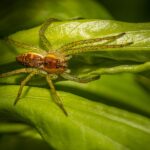 Are Tiny Bugs Harmful to Succulent Health?
Are Tiny Bugs Harmful to Succulent Health?However, it is crucial to keep in mind that mealybugs can easily spread to other plants, so it is important to isolate any infested succulents and regularly monitor nearby plants for signs of infestation. Additionally, maintaining optimal growing conditions for your succulents, such as providing adequate sunlight, proper watering, and well-draining soil, can help prevent mealybug infestations.
Remember, early detection and prompt action are key to successfully combating mealybugs and preserving the health of your succulent collection. By understanding the reason behind the white fuzz on succulent leaves and taking appropriate measures, you can ensure the well-being of your beloved plants.
Another solution is to spray the affected leaves with a mixture of water and dish soap
Another solution is to spray the affected leaves with a mixture of water and dish soap
If you notice white fuzz on the leaves of your succulent plants, don't panic! This common issue is caused by mealybugs, tiny insects that can infest your plants and feed on their sap. While mealybugs are not necessarily harmful to the overall health of your succulents, they can be unsightly and weaken the plants if left untreated.
One effective way to get rid of mealybugs and their white fuzz is to spray the affected leaves with a mixture of water and dish soap. This simple solution works by suffocating the insects and disrupting their protective waxy coating.
To prepare the spray, mix a few drops of dish soap with water in a spray bottle. Make sure to use a mild, liquid dish soap without any added chemicals or fragrances. Shake the bottle gently to ensure the soap is thoroughly mixed with the water.
Once the mixture is ready, carefully spray it onto the affected leaves, making sure to cover both the upper and lower surfaces. The soap will penetrate the fuzzy coating and reach the mealybugs underneath. Leave the solution on the leaves for a few minutes to allow it to work its magic.
 Powdery Mildew on Succulents: Symptoms, Treatment, and Prevention
Powdery Mildew on Succulents: Symptoms, Treatment, and PreventionAfter a few minutes, gently wipe off the white fuzz and any dead or weakened mealybugs using a soft cloth or cotton swab. Be careful not to damage the leaves while cleaning. If the infestation is severe, you may need to repeat this process over a few days to fully eliminate the mealybugs.
It's important to note that while this method is effective against mealybugs, it may not be suitable for all succulent varieties. Some delicate or sensitive plants may not tolerate the dish soap solution well. Therefore, it's always a good idea to test the spray on a small, inconspicuous area of the plant before applying it to the entire plant.
In addition to using the water and dish soap spray, it's crucial to address the underlying causes of the mealybug infestation. Overwatering, poor air circulation, and overcrowding can create favorable conditions for these pests. Ensure your succulents are receiving the right amount of water, provide adequate airflow around the plants, and space them out accordingly.
Conclusion:
White fuzz on succulent leaves is a common sign of mealybug infestation. By using a simple mixture of water and dish soap, you can effectively eliminate these pests and restore the beauty of your succulents. Remember to test the solution on a small area of the plant first and address the underlying causes to prevent future infestations. With proper care and attention, your succulents will thrive and remain free from white fuzz!
Keeping succulents in a well-ventilated area with good air circulation can help prevent the growth of white fuzz on their leaves
If you notice white fuzz on the leaves of your succulents, you may be wondering what causes this phenomenon. Understanding the reason behind the appearance of white fuzz on succulent leaves is essential for maintaining the health and beauty of your plants.
 Choosing Bug Spray for Succulents: Safety and Effectiveness
Choosing Bug Spray for Succulents: Safety and EffectivenessWhat is white fuzz on succulent leaves?
White fuzz on succulent leaves is a common issue that many plant enthusiasts encounter. It appears as a powdery or fuzzy substance that covers the leaves, giving them a white or grayish appearance. This fuzz can range from fine and powdery to thick and fluffy, depending on the severity of the condition.
While it may resemble mold or mildew, white fuzz on succulent leaves is typically a sign of a natural defense mechanism called trichomes. Trichomes are hair-like structures that grow on the surface of plants, including succulents. They serve various purposes, such as protecting the plant from excessive sunlight, reducing water loss, and deterring pests.
What causes white fuzz on succulent leaves?
The growth of white fuzz on succulent leaves can be attributed to several factors:
- Overwatering: Succulents are known for their ability to store water in their leaves, making them drought-tolerant plants. However, when succulents are overwatered, the excess moisture can create a favorable environment for the growth of fungi, which can manifest as white fuzz.
- Poor air circulation: Succulents thrive in well-ventilated areas with good air circulation. When placed in stagnant air or humid conditions, succulents are more prone to developing white fuzz on their leaves.
- Fungal infections: Certain fungal infections, such as powdery mildew, can cause white fuzz to appear on succulent leaves. These infections are usually a result of poor growing conditions or improper care.
How to prevent and treat white fuzz on succulent leaves?
To prevent the growth of white fuzz on succulent leaves, it is crucial to provide them with proper care:
- Ensure adequate drainage: Succulents should be planted in well-draining soil and pots with drainage holes to prevent water from accumulating around the roots.
- Water sparingly: Succulents have low water requirements, so it is important to water them infrequently and allow the soil to dry out completely between waterings.
- Provide good air circulation: Placing your succulents in an area with good air circulation, such as near a fan or an open window, can help prevent the growth of white fuzz.
- Avoid overcrowding: Overcrowding succulents can lead to poor air circulation and increased humidity, making them more susceptible to fungal infections.
- Use preventive measures: Applying a fungicide specifically formulated for succulents can help prevent fungal infections and control the growth of white fuzz.
By following these preventive measures and providing your succulents with optimal growing conditions, you can keep their leaves free from white fuzz and ensure their overall well-being.
Overwatering succulents can contribute to the development of white fuzz, so it's important to water them sparingly
One common issue that succulent enthusiasts often encounter is the presence of white fuzz on their plants' leaves. This fuzzy appearance can be quite alarming, leaving many wondering what could be causing it and how to address the problem. While there can be several factors contributing to this issue, overwatering is one of the primary culprits.
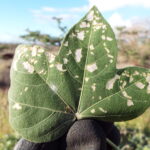 Understanding Leaf Loss in Succulents: Causes and Solutions
Understanding Leaf Loss in Succulents: Causes and SolutionsSucculents are plants that have adapted to survive in arid conditions, storing water in their leaves and stems. They have developed unique mechanisms to retain moisture and thrive in environments with limited rainfall. However, when succulents are overwatered, their natural defenses are compromised, leading to various problems, including the development of white fuzz.
When succulents receive excessive amounts of water, the excess moisture can create an ideal environment for fungal growth. Fungi, such as powdery mildew and mealybugs, are common culprits responsible for the appearance of white fuzz on succulent leaves. These organisms thrive in damp conditions and can quickly spread across the plant if not addressed promptly.
To prevent the development of white fuzz on your succulent leaves, it's crucial to water your plants sparingly. Succulents have evolved to withstand long periods without water, so they prefer infrequent but deep watering. Allow the soil to dry completely between waterings to ensure that you are not providing excessive moisture that encourages fungal growth.
In addition to proper watering, it's essential to provide adequate airflow and sunlight for your succulents. Good air circulation helps prevent the buildup of moisture around the leaves, reducing the chances of fungal infections. Place your succulents in a location where they can receive ample sunlight, as this helps strengthen their defenses and promotes overall plant health.
If you notice white fuzz on your succulent leaves, it's important to take action promptly. Remove the affected leaves, ensuring that you dispose of them properly to prevent the spread of any existing fungi or pests. If the problem persists or spreads, consider using natural remedies or consult a local horticulturist for further guidance.
Applying a layer of diatomaceous earth to the soil can help control mealybugs and prevent the growth of white fuzz on succulent leaves
When it comes to caring for succulents, one of the common issues that many plant enthusiasts encounter is the growth of white fuzz on the leaves. This fuzzy substance can be unsightly and may indicate the presence of mealybugs, a common pest that affects succulents.
Mealybugs are small, soft-bodied insects that feed on the sap of succulent plants. They are often found in the nooks and crannies of the leaves, where they suck out plant juices and leave behind a sticky residue. This sticky residue can attract mold and fungus, leading to the growth of white fuzz on the leaves.
 Is My Succulent Infested with Pests? Signs of White Web Infection
Is My Succulent Infested with Pests? Signs of White Web InfectionTo control mealybugs and prevent the growth of white fuzz on succulent leaves, one effective method is to apply a layer of diatomaceous earth to the soil. Diatomaceous earth is a natural, soft sedimentary rock that contains the fossilized remains of diatoms, a type of algae. It is widely used in gardening as a non-toxic insecticide.
How does diatomaceous earth work?
Diatomaceous earth works by dehydrating and physically damaging the exoskeleton of insects, including mealybugs. When applied to the soil, it creates a barrier that prevents mealybugs from crawling up onto the leaves and infesting the plants.
The sharp edges of the diatomaceous earth particles pierce the soft bodies of the insects, causing them to lose moisture and eventually die. This method is safe to use on succulents as it does not harm the plants or the environment.
How to apply diatomaceous earth to the soil?
First, make sure to wear protective gloves and a mask to avoid inhaling the fine particles of diatomaceous earth. Sprinkle a thin layer of diatomaceous earth on the soil around the base of the succulent, ensuring that the leaves are not in direct contact with the powder.
Use a small brush or your fingers to gently work the diatomaceous earth into the top layer of the soil. This will help distribute the powder evenly and enhance its effectiveness in controlling mealybugs.
Additional tips for preventing mealybugs:
- Inspect new plants: Before adding new succulents to your collection, thoroughly inspect them for any signs of mealybugs or white fuzz on the leaves.
- Isolate infested plants: If you notice mealybugs or white fuzz on any of your succulents, isolate the affected plants to prevent the pests from spreading to healthy ones.
- Regularly clean your succulents: Wipe down the leaves of your succulents with a damp cloth to remove any dust or debris, which can attract mealybugs.
- Maintain proper ventilation: Good air circulation around your succulents can help deter mealybugs and reduce the risk of white fuzz growth.
By applying a layer of diatomaceous earth and following these preventive measures, you can effectively control mealybugs and keep your succulent leaves free from white fuzz. Remember to monitor your plants regularly and take prompt action if you spot any signs of mealybug infestation.
If the infestation is severe, you may need to use a commercial insecticide specifically formulated for succulents to get rid of the mealybugs
 Causes of Red Tips on Succulent Plants: A Comprehensive Guide
Causes of Red Tips on Succulent Plants: A Comprehensive GuideUnderstanding the Reason for White Fuzz on Succulent Leaves
Succulents are known for their unique and beautiful appearance, with their thick, fleshy leaves and vibrant colors. However, it can be distressing to discover a white fuzz on the leaves of your beloved succulent. This white fuzz is often caused by an infestation of mealybugs, small insects that feed on the sap of succulent plants.
Identifying Mealybugs
Mealybugs are tiny, soft-bodied insects that are covered in a white, powdery wax. They can be found on the leaves, stems, and even the roots of succulents. These pests are most commonly found in warm and humid environments, such as greenhouses or indoor spaces with poor ventilation.
The Damage Caused by Mealybugs
Mealybugs feed on the sap of succulent plants by inserting their needle-like mouthparts into the plant tissues. This feeding activity weakens the plant and can lead to stunted growth or even death if left untreated. In addition to causing physical damage, mealybugs also excrete a sticky substance called honeydew, which can attract ants and promote the growth of sooty black mold.
Getting Rid of Mealybugs
If you notice a white fuzz on your succulent leaves, it's important to take action to eliminate the mealybug infestation. Here are some steps you can take:
 Understanding and Treating the White Substance on Succulents
Understanding and Treating the White Substance on Succulents- Isolate the affected plant: Remove the infested succulent from other plants to prevent the spread of mealybugs.
- Manual removal: Use a cotton swab dipped in rubbing alcohol to carefully wipe away the mealybugs. This method is effective for small infestations.
- Natural predators: Introduce natural predators such as ladybugs or lacewings into your garden. These insects feed on mealybugs and can help control their population.
- Commercial insecticides: If the infestation is severe, you may need to use a commercial insecticide specifically formulated for succulents to get rid of the mealybugs. Follow the instructions carefully and ensure the product is safe for your specific succulent variety.
Preventing Mealybug Infestations
Prevention is always better than cure when it comes to mealybugs. Here are some preventive measures you can take:
- Inspect new plants: Before introducing new succulents to your collection, thoroughly inspect them for any signs of mealybugs or other pests.
- Quarantine newly acquired plants: Keep new plants isolated for a few weeks to monitor them for any potential infestations before introducing them to your existing collection.
- Maintain good plant hygiene: Regularly clean your succulents by gently wiping their leaves with a damp cloth. This helps remove any dust or debris that may attract mealybugs.
- Proper watering: Avoid overwatering your succulents, as excess moisture can create a favorable environment for mealybugs.
Conclusion
While discovering a white fuzz on your succulent leaves can be concerning, understanding the reason behind it and taking appropriate action can help you effectively manage mealybug infestations. By following the preventive measures and implementing the suggested control methods, you can keep your succulents healthy and free from these pesky pests.
Frequently Asked Questions
1. Why do succulent leaves develop white fuzz?
Succulent leaves develop white fuzz as a natural defense mechanism against excessive sunlight and to reduce water loss through evaporation.
2. Is white fuzz on succulent leaves harmful?
No, white fuzz on succulent leaves is not harmful. In fact, it can provide protection against sunburn and help retain moisture in the plant.
3. How can I get rid of white fuzz on my succulent leaves?
White fuzz on succulent leaves cannot be completely removed as it is a natural adaptation. However, you can gently wipe it off with a soft cloth or brush if desired.
 Causes of Blue Discoloration in Succulent Leaves
Causes of Blue Discoloration in Succulent Leaves4. Will removing the white fuzz affect the health of my succulent?
No, removing the white fuzz will not affect the health of your succulent. It is purely a cosmetic feature and does not impact the plant's overall well-being.
If you want to read more articles similar to Understanding the Reason for White Fuzz on Succulent Leaves, you can visit the Pests and Diseases category.

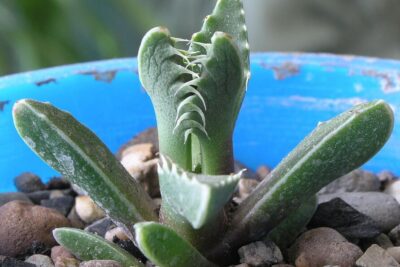

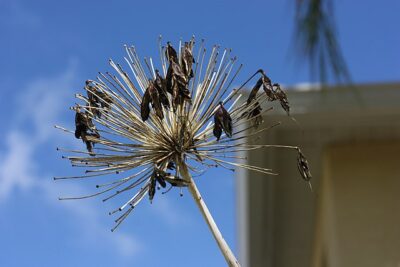
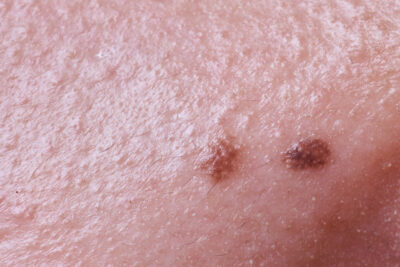
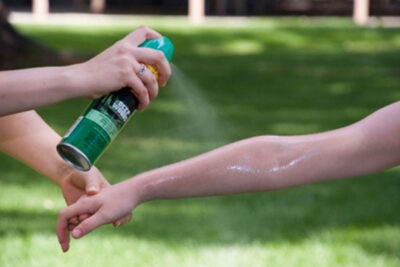
You Must Read